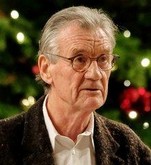
Monty Python and the Holy Grail (1975)

Raiting: ![]() 8,2 /10
8,2 /10
Genre: Comedy
Director: Terry Gilliam, Terry Jones
Stars: Graham Chapman, John Cleese and Eric Idle
Country: United Kingdom
Release date: 25 May 1975
Length: 91 minutes
Top cast - Monty Python and the Holy Grail (1975)

Second Swallow-Savvy Guard / The Black Knight / Peasant 3 / Sir Launcelot the Brave / Taunting French Guard / Tim the Enchanter

Dead Collector / Peasant 1 / Sir Robin the Not-Quite-So-Brave-as-Sir Launcelot / First Swamp Castle Guard / Concorde / Roger the Shrubber / Brother Maynard

Patsy / Green Knight / Old Man from Scene 24 (Bridgekeeper) / Sir Bors / Animator / Gorilla Hand

First Swallow-Savvy Guard / Dennis / Peasant 2 / Right Head / Sir Galahad the Pure / Narrator / King of Swamp Castle / Brother Maynard's Brother / Leader of The Knights Who Say NI!



